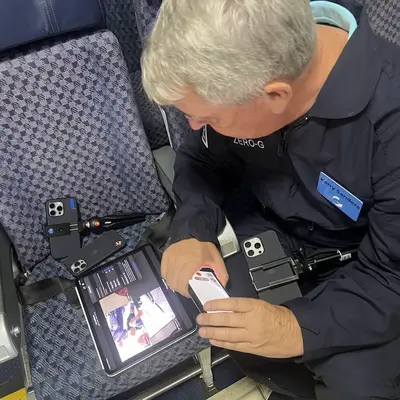It all started in the heart of Kentucky. A small town gathered together, neighbors volunteering side by side, to help a family rebuild after tragedy. Cindy had lost both arms and legs, yet through generosity and grit, her community made sure she and her family had a home again.
Forty-five volunteers built that house in just ten days. And I was there to capture the story. Not with a truckload of broadcast gear. Not with a satellite dish parked on the street. But with something you probably have in your pocket right now: an iPhone.
Using Final Cut Camera, I connected several iPhones for a multi-cam shoot. Everything was uploaded to Alteon.io, where our editor—half a world away in Hawaii—picked up the footage and got to work.
That was just one story.
A few months later, I took those same iPhones into zero gravity. Yes—literally floating midair to document NASA researchers and students testing what it might be like to drill on the moon. This time, I sat in the editor's chair, syncing multiple iPhone 16 cameras and audio directly in Final Cut Pro. The story, once again, was made possible because of the speed and simplicity of modern tools.

After more than 30 years in network news, I've seen the industry transform. I remember the days when telling these kinds of stories meant traveling with 50 cases of heavy gear and booking time on a satellite. Today? It all fits in a backpack. No loss in quality. In fact, the technology opens doors we never could have imagined back then.
For me, storytelling has always been about people—their triumphs, their struggles, their dreams. What's changed is how quickly and effectively we can share those stories with the world. With just a few phones, Final Cut Pro, and cloud tools like Alteon.io, the barrier between the field and the editor's desk disappears.
The tools have changed. The mission has not.
And that, to me, is the future of storytelling.
